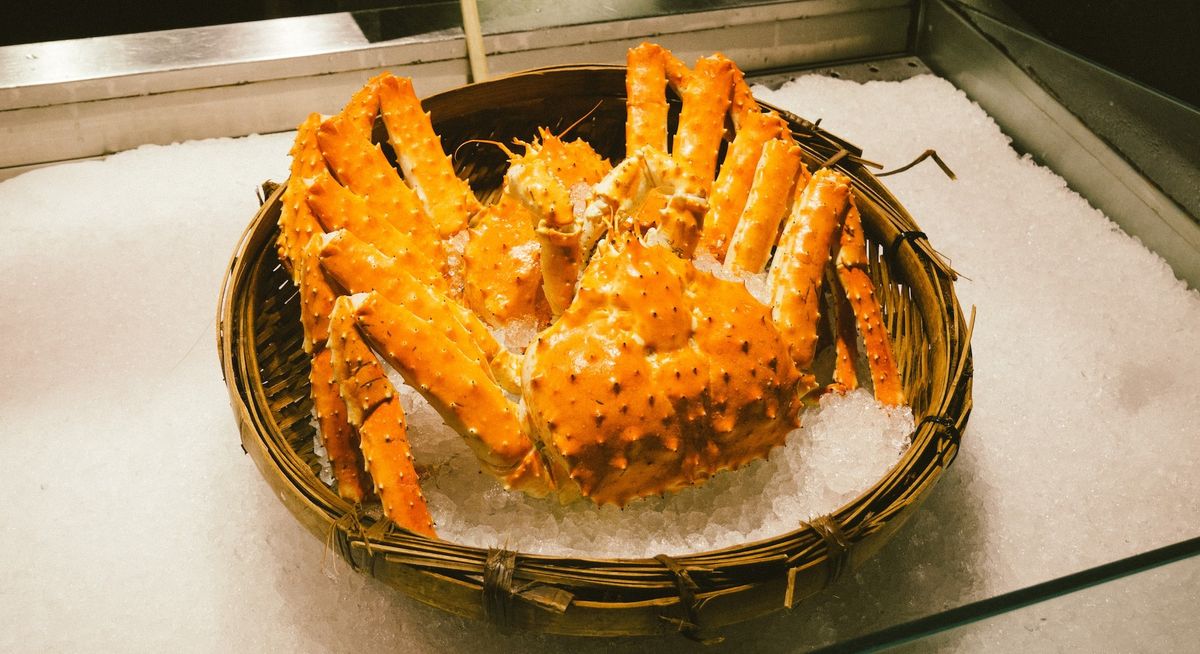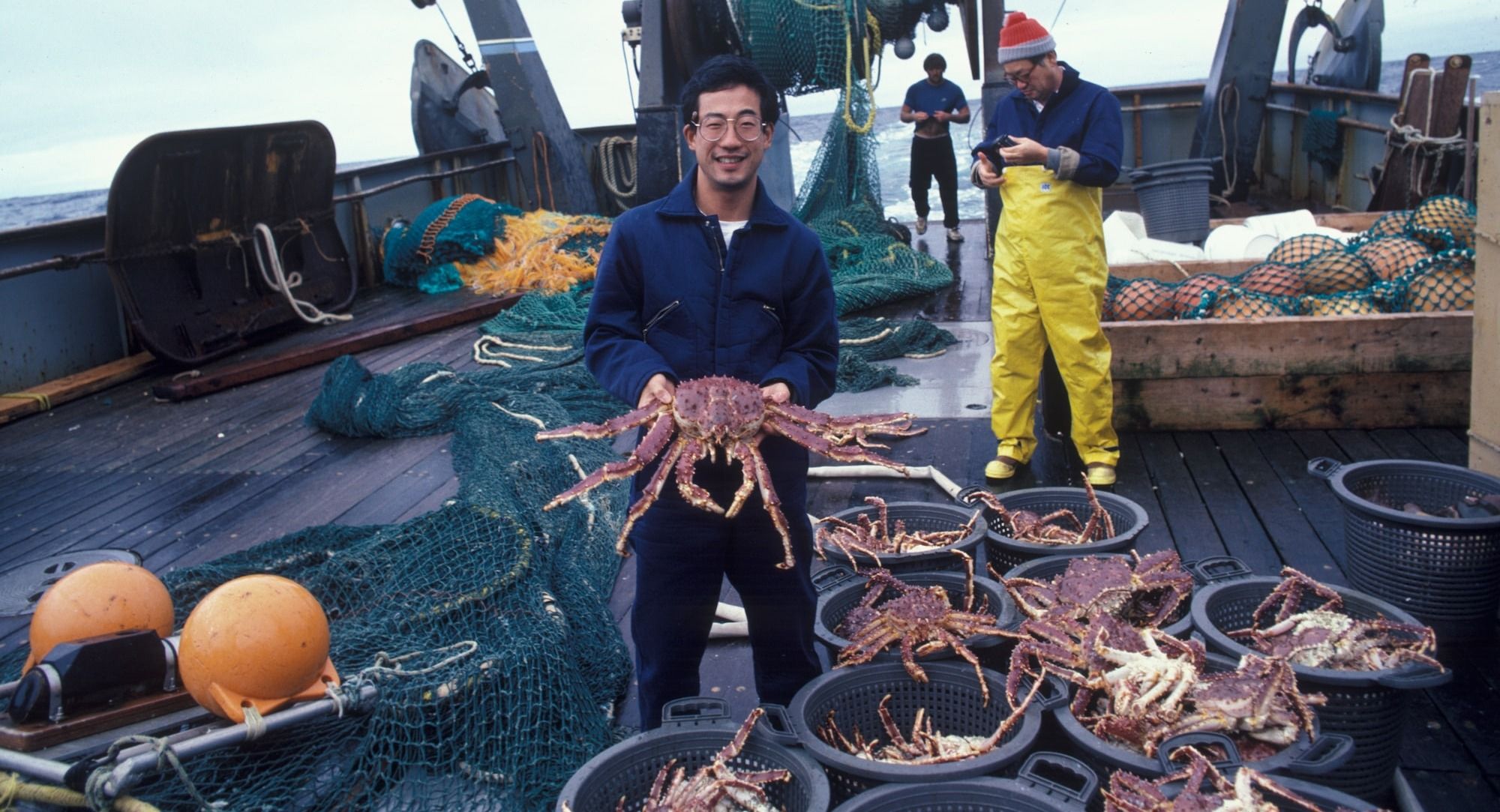Discover The World's Most Expensive Crab
Crabs are prized for their delicate meat, but over-harvesting has made certain species rare and expensive, elevating their status in gourmet cuisine.

Crab is a culinary gem, revered for its tender meat and unique flavor, making it a favorite on many plates. The act of cracking open a crab shell further elevates the dining experience, offering both taste and interaction.
While many crab species are readily available, certain varieties have become rarities due to over-harvesting and their intrinsic value, commanding premium prices.
In this article, we'll explore the pinnacle of seafood and delve into the elite world of crabs, understanding the rationale behind their luxury status.
What Drives the Cost of These Premium Crabs?
The steep price tags associated with these elite crustaceans can be attributed to a blend of factors that position them as a pinnacle of seafood luxury.
Their rarity plays a pivotal role. Some of these crabs are exclusive to specific geographical areas or only available during certain seasons, which amplifies demand and drives up prices.
Moreover, the unparalleled taste and unique mouthfeel of these high-end crabs further justify their elevated costs, setting them apart as true gourmet treasures.
Discover Top Most Expensive Crab In The World

Alaskan King Crab - $180 / kilogram
The Red King Crab, scientifically termed Paralithodes camtschaticus, is often referred to as the Kamchatka or Alaskan king crab.
Native to the chilly North Pacific waters and introduced to the Barents Sea, this crab boasts a leg span of up to 1.8 m (5.9 ft).
While the Bering Sea accounts for most of Alaska's king crab harvest, smaller fisheries exist in areas like Norton Sound.
Bristol Bay, in particular, is renowned for its high-quality red king crab, which is in high demand globally, especially in Japan, the US, and Europe.
Annually, about 100 boats in Bristol Bay catch millions of pounds over just 2 to 3 months.
Intriguingly, their dark burgundy color in the wild turns to a vibrant red when cooked, highlighting their culinary appeal. Among all crab varieties, its flavor is unsurpassed.
Harvesting Season: Primarily from October to January.
Flavor Profile: A harmonious blend of sweetness and a subtle briny undertone, complemented by a luxuriously smooth texture.
Crystal Crab - $150 / kilogram
Crystal crabs (Chaceon albus), native to the deep-sea regions off the coast of Western Australia, boast a unique pale white hue and can weigh over two kilograms.
These crabs thrive in remarkable depths, ranging from 450 to 1,220 meters.
Notably scavengers, their diet predominantly consists of dead animals and plant material.
Despite their exquisite taste attributed to their unpolluted habitat, making them one of the world's most coveted crabs, they remain a rarity in Australian markets.
Instead, they find favor in the Chinese market, where a single crab, averaging 2 kg, can fetch up to $300.
The commercial fishing of Crystal crabs commenced in 1997, and the males can sport a shell length of up to 17cm, while females measure around 15cm.
Flavor Profile: These crabs have a delicate, sweet flavor that distinguishes them from other crab varieties.
This clean and pristine environment contributes to their reputation as one of the best tasting crabs globally. The crab's meat is tender with a succulent texture, making it a sought-after delicacy, especially in markets like China.
Season: All year
Stone Crab (Only Claw)- $140 / kilogram
Stone crab claws, scientifically known as Menippe mercenaria, are a luxury seafood item particularly popular on Florida's southeastern coast, and extending to places like Cuba, the Bahamas, and Mexico.
Fetching prices of up to $70 per pound in restaurants, these claws stand out as being notably pricier than other crab varieties, such as the Alaskan snow crab.
This elevated cost is rooted in their unique and labor-intensive harvesting method: only the claws are taken, while the crab body is returned to its oceanic home.
Every claw that's harvested must adhere to stringent size regulations, with a required length of at least 2 7/8th inches from its base to the tip.
The intricate process involves baited traps, frequently deploying up to 100 traps on a single line. After capture, a dedicated team inspects each crab, declaws those that meet the size standard, and releases them.
An intriguing aspect of the operation's cost is the bait – primarily pig's feet. With such a meticulous process and their limited availability, it's clear why Menippe mercenaria claws are a sought-after delicacy, commanding a premium price.
Season: typically runs from October through May. This allows the crabs a reprieve during their peak molting season, ensuring that the population remains sustainable.
It's during this period that the crabs regenerate their claws, and the off-season provides them an opportunity to regrow before the next harvesting season begins.
Flavor Profile: It is renowned for its rich, sweet, and succulent meat. The crab's unique taste is often described as a cross between lobster and crab, with a buttery and slightly oceanic undertone.
Blue King Crab - $100 / kilogram
The Blue King Crab, scientifically termed Paralithodes platypus, thrives in the North Pacific's chilly depths near St. Matthew Island, the Pribilof Islands, and the Aleutian chain.
Renowned for its sweet meat and large claws, it's especially notable among the Pribilof population, which boasts some of the world's largest crabs.
In their native icy environment, ranging between 100 – 400 meters below the surface, these crabs exhibit a brown color with striking blue highlights.
However, upon cooking, they adopt a vibrant orange-red hue, often leading to their marketing in the U.S. as "red king crab". Their flavor is a tad milder but sweeter than their red relatives.
Dietarily diverse, Blue King Crabs consume worms, small fish, algae, and even other crabs. They're also found in waters near Hokkaido, Japan, and the Sea of Okhotsk.
But, given their limited range and tight fishing regulations, they've become a rare and premium delicacy.
Flavor Profile: Sweet with a hint of oceanic saltiness and a firm texture.
Season: Primarily caught between October and January.
Snow Crab (Matsuba) - $95 / kilogram
Snow Crab, or Chionoecetes opilio, is cherished in Japan as Zuwaigani, Matsubagani, or Echizen-gani.
This winter culinary star, previously overlooked, has surged in popularity for its exquisite taste. Especially prized in Japanese delicacies like sushi and sashimi, its appeal is magnified by its brief seasonal availability from November to March.
Sourced mainly from the icy realms of the Sea of Japan, Bering Sea, and areas stretching from west Greenland to Nova Scotia, this crustacean thrives in subarctic zones.
Sporting elongated legs, male snow crabs can measure up to 15 centimeters in carapace width, significantly outgrowing the females.
Inhabiting the muddy ocean floors, their 12-13 year lifespan sees a diet of worms, fish, and shrimp.
Younger crabs prefer complex terrains for shelter, while larger ones navigate depths between 50 to 300 meters. Crucially, temperatures above 7°C may adversely impact them.
Season: The main fishing season is winter, Nov- March
Flavor Profile: Delicate and sweet with a flaky, tender texture.
Did You Know: Historically, purchasing the season's first crab has been seen as a mark of prestige.
Enthusiasts often shell out substantial amounts in auctions for this honor. A Snow crab fetched $18,000 in 2018, and in the following year, another astonishingly commanded $46,000.
Horsehair Crab (Kegani) - $90 / kilogram
The Horsehair Crab or Kegani, native to Hokkaido's waters in the Northwest Pacific, is a culinary icon in Japanese cuisine.
Recognized for their tiny hairs, these crabs from the Sea of Okhotsk and the Western Bering Sea might be smaller than most, but they're a flavorful delight.
Their annual journey begins as the ice recedes around Hokkaido. By March, the well-fed crabs, enriched by a plankton diet beneath the melting ice, migrate to shallower waters, making them a springtime favorite, especially along the Okhotsk coast.
In summer, they thrive in the mineral-abundant regions of the Ring of Fire, acquiring a soft texture and a distinctive flavor from their kani miso, a delicacy made from their organs.
Autumn sees them in the waters of Shiranuka and Kushiro, benefiting from a diverse fish diet, resulting in firm meat.
Winter finds them off the Hidaka and Tokachi Coast, feeding on the region's famous Hidaka konbu seaweed, giving them a unique creamy taste.
Despite the year-round availability in Hokkaido, the crab's flavor nuances shift with the seasons. Whether enjoyed fresh from the port or prepared Hamayude-style, the Horsehair Crab remains a cherished seafood gem of Japan.
Season:
Spring: Okhotsk Coast (March to June) after the drift ice melts.
Summer: Ring of Fire region (July to August).
Autumn: Shiranuka, Kushiro, Nemuro Coast (September to December).
Winter: Hidaka and Tokachi Coast (December to February).
Flavor Profile: Deep and rich with a slightly sweet aftertaste and a firm texture. Boasts tender meat with a notable sweetness. Its kani miso, derived from the crab's internal organs, offers a deep, umami-rich flavor.
The taste can vary based on the crab's harvest location and diet


